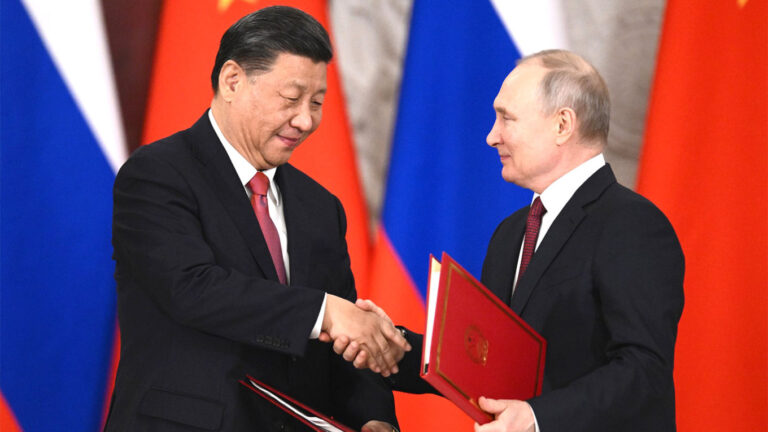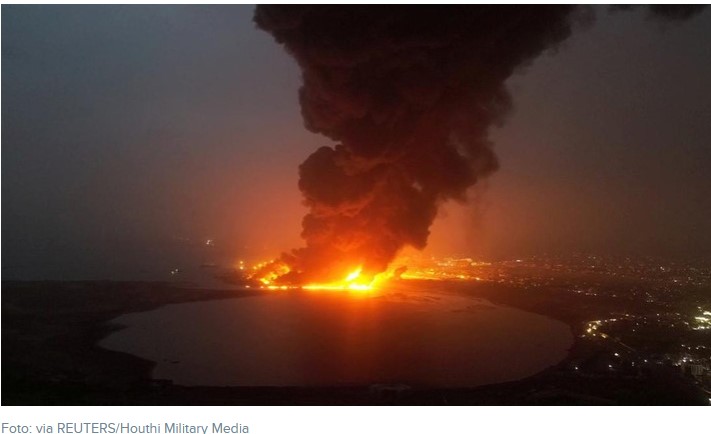
STRATEGIC ASSESSMENT. As stated by U.S. Secretary of State Antony Blinken toward the end of his January 2024 trip to the Middle East – his fourth since the Israel-Hamas war began on October 7 – the core U.S. goal is to “mak[e] sure that the conflict ongoing now in Gaza doesn’t spread to other places. That’s been our focus since October 7th, and it remains our focus today.” Yet, upon Blinken’s January 11 return to Washington – after visiting Türkiye, Israel, the West Bank, Qatar, the United Arab Emirates (UAE), Saudi Arabia, Bahrain, Jordan, and Egypt, as well as Greece – the expansion of the Israel-Hamas war throughout the region was in stark evidence. That night, the United States and the United Kingdom, backed by several allies, launched a large-scale strike on the military assets of the Houthi movement in Yemen. The allied strikes confirmed that U.S. and partner interceptions of nearly thirty Houthi missile and drone attacks on naval vessels and commercial shipping in the Red Sea since October 17, including the destruction of several Houthi small attack craft on December 31, had failed to deter the Iran-aligned group from threatening global commerce. In Bahrain, one of the last stops on his regional tour, Secretary Blinken explained the stakes of the Houthi attacks for U.S. interests, saying: “What’s happened because of these Houthi attacks against commercial shipping is that thousands of ships have had to divert, take longer routes, pay more for insurance, and that gets translated into higher prices for people for everything from fuel, to medicine, to food. It’s disrupting supply chains and so it’s having a real impact on people around the world in their daily lives.” The Houthis remain undeterred and have vowed to continue attacking shipping, despite the destruction of a portion of their capabilities, until Israel’s offensive in Gaza ceases, a clear articulation of Iran’s unity of fronts strategy operationalized.
Similarly, U.S. retaliatory strikes in Iraq and Syria have failed to deter Iran-aligned militias from attacking U.S. forces deployed there on at least 130 occasions since October 17. At least one of the attacks targeted the sprawling U.S. Embassy compound in Baghdad. Perhaps even more worrisome, Iran has apparently started to mobilize its own forces to pressure the United States to discontinue its support for Israel’s war effort. Iran conducted an armed drone attack on a chemical tanker in the Indian Ocean, and, in early January, Tehran seized an oil tanker in the Gulf of Oman. Iran also positioned one of its largest naval vessels off the coast of Yemen as a show of support for the Houthis’ attacks. Iran’s actions, although short of provoking U.S. or other retaliation to date, nonetheless demonstrate that there is significant potential for regional conflagration and direct U.S.-Iran warfare. Just in the course of the past two days, Iran has fired missiles at targets in Iraqi Kurdistan, Syria, and Pakistan, demonstrating that Tehran remains more brazen and confrontational than it has been in a long time.
Secretary Blinken’s January itinerary did not include Lebanon, but another envoy, Amos Hochstein, has been tasked to try to de-escalate the skirmishing between Israel and Lebanese Hezbollah that began after the Hamas attack on Israel. Of members of Iran’s axis of resistance, Hezbollah is probably the most capable of causing widespread destruction inside Israel and drawing in its sponsor, Iran, into a region-wide war. Hochstein has sought to enlist Lebanese leaders – many of whom resent Hezbollah’s wielding of a large, Iran-supplied armed force outside the chain of command – to persuade Hezbollah not to draw Lebanon into a war with Israel. He and other officials have also cautioned Israeli leaders not to implement threats to militarily force Hezbollah to withdraw its militia from areas near the border. However, despite the diplomacy, which French officials have aided, the Israel-Lebanon front, far from calming down, appears to have deteriorated further. In early January, Israel struck and killed a key Hamas leader in Lebanon and a commander of Hezbollah’s elite Radwan forces. Hezbollah has responded by expanding its target set over the border to include key Israeli listening sites and other installations. On the other hand, the Lebanon-Israel front still remains far short of all-out Israel-Hezbollah warfare – an observation due more to the calculations of both Israel and Hezbollah than to the efficacy of U.S. or allied diplomacy.
Nor has Secretary Blinken’s trip, or U.S. President Joe Biden and other senior U.S. officials, advanced U.S. efforts to de-escalate the Israel-Hamas war or provide for the governance and reconstruction of the Gaza Strip after Israel ceases major combat operations. Israel has been gradually reducing the scale and tempo of its offensive in parts of Gaza, but Israel Defense Forces (IDF) operations continue to incur high levels of Gazan civilian casualties. Intensive diplomacy in Qatar by Secretary Blinken and another senior U.S. official, Brett McGurk, who visited Qatar separately in January, did not revive negotiations to release the 130 Israeli and third-country hostages still held in Gaza, although these talks appear ongoing and may still yield fruit at some point. The Associated Press reports that U.S. and Qatari efforts have succeeded in some concessions – Israel will allow additional medications into Gaza on the condition that the hostages receive some of that medicine, while additional aid shipments will also be allowed into Gaza. In his discussions with Saudi and Emirati leaders, Secretary Blinken did not obtain unconditional commitments to fund Gaza’s reconstruction. The Gulf states continue to make their contributions to Gaza contingent on a final resolution of the Israeli-Palestinian dispute, including the establishment of an independent Palestinian state. Toward the end of his trip to the region, Secretary Blinken sought to emphasize the positive by saying: “This is what I heard in country after country – a willingness to engage, to help to support the day after in Gaza, but on the condition that there be a clear pathway to the realization of Palestinian political rights, to a Palestinian state.”
Yet, U.S. leaders have been unable to overcome Israeli Prime Minister Benjamin Netanyahu’s entrenched opposition to a Palestinian state or advance even the more limited goal of re-establishing the West Bank-based Palestinian Authority (PA)’s governance of the Gaza Strip after Israel’s offensive winds down. During his meeting with Secretary Blinken in Ramallah, Palestinian Authority (PA) President Mahmoud Abbas reportedly questioned the U.S. ability to compel the Netanyahu government to offer any concessions to the Palestinians, citing the U.S. failure to prevail on Israel to release $150 million per month in tax revenues due to the PA but withheld by Israel after the October 7 Hamas attack. Israeli leaders insist that the PA, which has a reputation for corruption and has consistently failed to prevent West Bank Palestinian militant attacks on Israelis, cannot be trusted to maintain security in the Gaza Strip unless the Authority is fundamentally reformed. U.S. leaders publicly support reforming the PA and have suggested promoting technocrats to key PA leadership roles, but there was no indication that Secretary Blinken moved President Abbas toward relinquishing any of his authority. Nor has U.S diplomacy, including frequent phone calls between President Biden and Prime Minister Netanyahu, softened Israeli opposition to a two-state solution, with Axios recently reporting “the President’s patience is running out.” Still, undeterred by the Israeli hard line, which far-right members of Israel’s government have reinforced, the readout of Secretary Blinken’s January 9 meeting with Prime Minister Netanyahu made clear the U.S. view that a two-state solution is the only way to prevent unending conflict, saying: “The Secretary reiterated the need to ensure lasting, sustainable peace for Israel and the region, including by the realization of a Palestinian state.”





